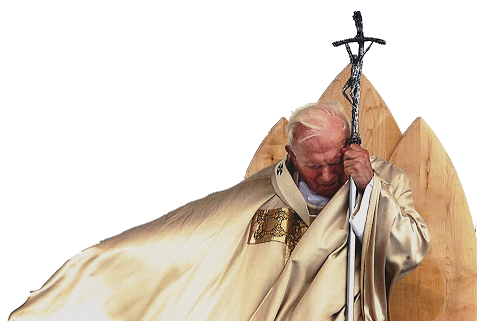
The vision we were introduced to yesterday of God on his throne in glory continues with the introduction of a scroll that represents God’s secret plans for the world (Revelation 5:1‑10). Its contents are described in chapters 6‑9 of Revelation, which we will not be reading in the liturgy. Today’s passage is beautiful once the symbolism of the images is made clear.
First, a word about scrolls. The normal way for writings to be kept was in the form of scrolls. Books, as we know them, did not come into existence until the 2nd century AD. The scroll was made either of leather (e.g. parchment) or from papyrus, a reed whose fibers were made into a kind of rough paper. They were normally written on one side only (but sometimes two) and in columns with pen and ink. After completion, they were rolled up and sealed so that only those authorized could read them. Some examples of scrolls found in Egypt were up to 100 feet in length, but biblical scrolls would seldom be more than 30 feet. Reading them was a somewhat cumbersome process, as they had to be unrolled and re-rolled at the same time. The arrival of books changed all that by making any part of the script quickly accessible.
In his vision, John sees “the One”, God, on the throne holding a scroll in his hands. Unusually, this scroll was written on both sides, and it had seven seals, one for each of the churches described in Tuesday’s Daily Reflection. This indicated its degree of total inaccessibility to the unauthorized.
The voice of an angel then is heard asking who, “…is worthy to open the scroll and break its seals?” It seems “ no one in heaven or on earth or under the earth was able to open the scroll or to look into it.” John weeps when he realizes that no one is found worthy to open and reveal the contents of the scroll, until one of the 24 elders tells him that there is someone who can open the scroll and read it: “See, the Lion of the tribe of Judah, the Root of David, has conquered, so that he can open the scroll and its seven seals.”
The “Lion of Judah” is a messianic title found in Genesis, where Judah is referred to as a “lion’s cub” and promised the right to rule “until he comes to whom it belongs”. The “Root of David”, from Isaiah, points to a future savior‑king descended from King David. Our Lord Jesus, of course, is indicated here. “He has conquered” refers to conquering Satan, death, and the world.
The “Lion” then appears in the form of a Lamb, standing between the throne of God with the four creatures and the outer circles of the elders on their 24 thrones. The Lamb bears the marks of having been sacrificed, for this is the Passover Lamb sacrificed to save God’s people. Although the wounds are visible, the Lamb has risen from death and is upright in triumph and victory. The wounds are the badges of his victory over sin and death.
As a conqueror of death, this Lamb is also a Lion. Incidentally, Revelation uses a word for “lamb” (arnion) 29 times. Arnion is found only once elsewhere in the New Testament, in the scene after the resurrection where Jesus tells Peter to “feed my lambs” (see John 21:15). There is also a tradition in apocryphal writing for the ‘lamb’ as a victorious military leader. The Lamb has seven horns and seven eyes (remember the seven churches). The number ‘seven’ indicates fullness and completeness. The horns represent power and the eyes knowledge and wisdom.
The Lamb now comes forward to take the scroll from the hands of God sitting on his throne. As soon as he does so, the four creatures and the 24 elders all prostrate themselves. They give the same worship to the Lamb as they do to the One on the throne.
They each have a harp, used to accompany the songs of praise they sing, and bowls of incense representing the prayers of the whole Christian community. Incense was a normal feature of Hebrew ritual. In later Jewish thought, angels rose to heaven on the smoke to present the prayers of saints to God (see Tobit 12:11‑15). Our image of heaven as people kneeling on clouds playing harps comes from images like this in Revelation. But of course, our future life with God should in no way be seen as being like this!
The passage concludes with the “new song” of the creatures and the elders, a hymn in praise of the Lamb, who alone is found worthy to open the scroll. In the Old Testament, a new song celebrates a new intervention of deliverance or blessing by God. Here, it is the Lamb who has earned the right to open the scroll by, the sacrificing and pouring out of his blood, which bought back people of every race and nation and: “…made them a kingdom and priests serving our God, and they will reign on earth.” “Kingdom [or ‘kings’ in some translations] and priests”, previously an Old Testament designation of Israel, is now applied in the New Testament to the whole Christian community.
Through our baptism and our identifying with the Lamb, we share in a special way in both the kingship and priesthood of Christ, and in his role as prophet. This is true of every Christian and not just the hierarchy, clergy or religious.
Today we give special thanks and praise to the Lamb, who sacrificed his life in love for us and who, through his life, death and resurrection and through the Gospel (the Scroll) he bequeathed to us, has left us a priceless guide to a life of happiness and fulfilment.
May God Bless You and Grant You His Peace!

